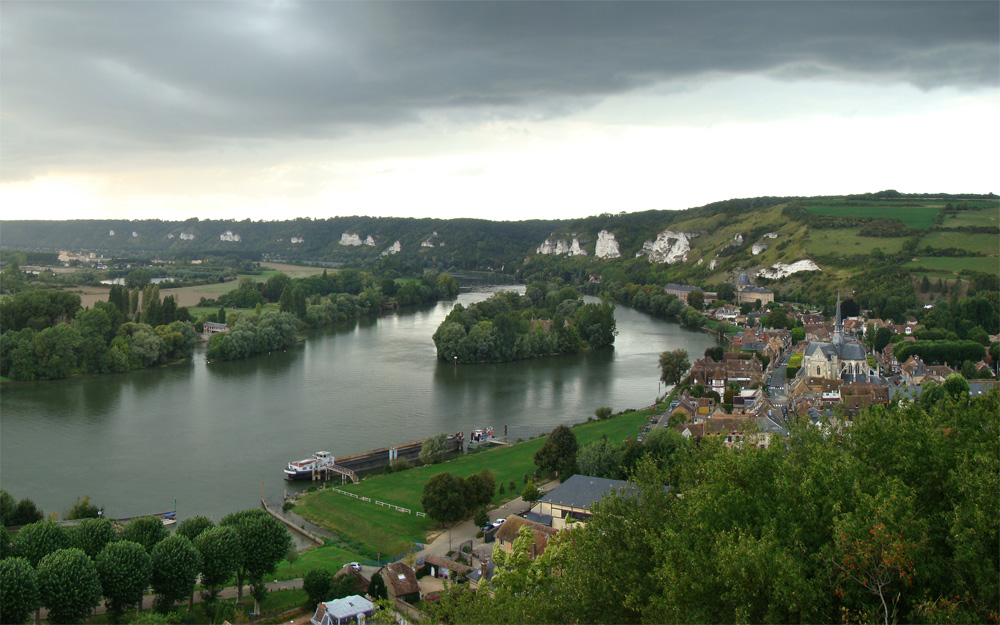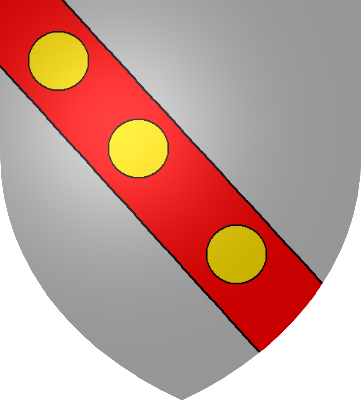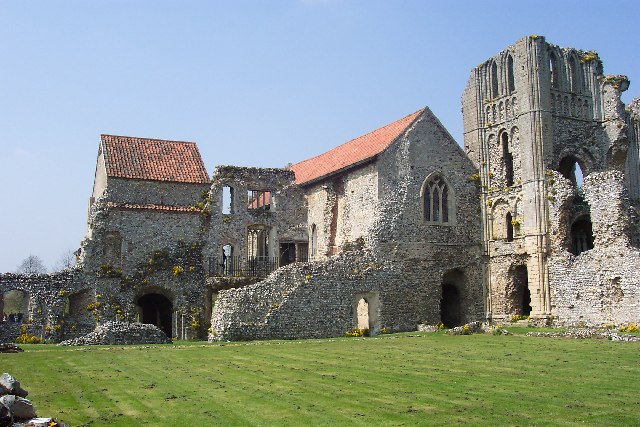|
Henry I, Count Of Eu
Henry I, Count of Eu and Lord of Hastings (c. 1075 – 12 July 1140) was the son of William II, Count of Eu and his wife Beatrice of Bully. His father died in 1096, having revolted against King William II of England. As the eldest son, Henry succeeded William as Count of Eu and Lord of Hastings. In 1101, he supported Duke Robert Curthose against his brother Henry Beauclerc who has just seized the English throne. Robert left Tréport, the domain of the county of Eu, to invade England. Orderic Vitalis reports that in 1104, while still in Normandy, Henry submitted to the English king. He fought for the king at the Battle of Tinchebray in 1106, where Duke Robert was taken prisoner, to remain in captivity for the rest of his life. Henry joined the cause of William Clito, the son of Duke Robert, in the coalition composed of Baldwin VII of Flanders, Fulk V of Anjou, and Louis VI the Fat. In 1117, Henry and Hugh de Gournay were arrested at Rouen by Henry I. On the promise of good be ... [...More Info...] [...Related Items...] OR: [Wikipedia] [Google] [Baidu] |
William, Count Of Sully
William the Simple ( – c. 1150) was Count of Blois and Count of Chartres from 1102 to 1107, and jure uxoris Count of Sully. Biography William was the eldest son of Stephen, Count of Blois and Adela of Normandy, daughter of William the Conqueror. William was the older brother of Theobald II, Count of Champagne; Stephen, King of England; and Henry, Bishop of Winchester. In the absence of male issue to Henry I of England, William was the eldest legitimate grandson of William the Conqueror. He would thus have been the principal rival to Henry's daughter Matilda to inherit the throne after Henry's death. However, William was not considered as a candidate for the English crown. Several historians have taken the view that he was passed over because of mental deficiency; hence his soubriquet "William the Simple". Though widely argued, this has never been clearly substantiated. William was at first groomed to inherit the comital thrones of Blois and Chartres, and was designated c ... [...More Info...] [...Related Items...] OR: [Wikipedia] [Google] [Baidu] |
Louis VI The Fat
Louis VI (late 1081 – 1 August 1137), called the Fat (french: link=no, le Gros) or the Fighter (french: link=no, le Batailleur), was King of the Franks from 1108 to 1137. Chronicles called him "King of Saint-Denis". Louis was the first member of the house of Capet to make a lasting contribution to centralizing the institutions of royal power. He spent almost all of his twenty-nine-year reign fighting either the " robber barons" who plagued Paris or the kings of England for their continental possession of Normandy. Nonetheless, Louis VI managed to reinforce his power considerably and became one of the first strong kings of France since the death of Charlemagne in 814. Louis was a warrior-king, but by his forties his weight had become so great that it was increasingly difficult for him to lead in the field (hence the epithet ). Details about his life and person are preserved in the , a panegyric composed by his loyal advisor, Suger, abbot of Saint Denis. Early life Louis was ... [...More Info...] [...Related Items...] OR: [Wikipedia] [Google] [Baidu] |
Counts Of Eu
This is a list of the counts of Eu, a French county in the Middle Ages. ( Eu is in the department of Seine-Maritime, in the extreme north of Normandy.) House of Normandy * 996–1015: Geoffrey, also Count of Brionne, illegitimate son of Duke Richard I of Normandy * 1015–1040: Gilbert, also Count of Brionne, son of the previous * 1040–1050 (approximate): William I, brother of Geoffrey * William Busac, son of the previous, 1050-1053 (approximate) * Robert I, also Lord of Hastings, son of William I, 1053-1093 * William II, also Lord of Hastings, son of Robert, 1093-1096 *Henry I, also Lord of Hastings, son of William II, 1096-1140 *John, also Lord of Hastings, son of Henry I, 1140-1170 * Henry II, also Lord of Hastings, son of John, 1170-1191 * Alix, Countess of Eu and Lady of Hastings, daughter of Henry II, 1191-1246. House of Lusignan *1213–1217/19 Raoul I of Lusignan, Seigneur of Exoudun, husband of Alix, Countess of Eu *1246–1250 Raoul II of Lusignan, S ... [...More Info...] [...Related Items...] OR: [Wikipedia] [Google] [Baidu] |
Foucarmont
Foucarmont () is a commune in the Seine-Maritime department in the Normandy region in northern France. Geography A large village of farming and associated light industry, situated by the banks of the river Yères, in the Pays de Bray, some southeast of Dieppe, at the junction of the D928, the D16 and the D920 roads. The A28 autoroute passes within the borders of the commune. Population Places of interest * The twentieth century church of St.Martin. * The remains of a 12th-century abbey. See also *Communes of the Seine-Maritime department The following is a list of the 708 communes of the French department of Seine-Maritime. The communes cooperate in the following intercommunalities (as of 2020):Communes of Seine-Mari ... [...More Info...] [...Related Items...] OR: [Wikipedia] [Google] [Baidu] |
Bourgtheroulde-Infreville
Bourgtheroulde-Infreville () is a former commune in the Eure department in Normandy in northern France. It is the seat of the commune of Grand-Bourgtheroulde. History The Battle of Bourgthéroulde was fought between English loyalist and Norman rebels in 1124. On 1 January 2016, Bosc-Bénard-Commin, Bourgtheroulde-Infreville and Thuit-Hébert merged, becoming one commune called Grand-Bourgtheroulde. 9 December 2015 Population See also *Communes of the Eure department
The following is a list of the 585 communes of the Eure department of France.
The communes cooper ...
[...More Info...] [...Related Items...] OR: [Wikipedia] [Google] [Baidu] |
Amaury III Of Montfort
Amaury III de Montfort († April 18 or 19, 1137) was a French nobleman, the seigneur de Montfort-l'Amaury, Épernon, and Houdan in the Île-de-France (1101–) and Count of Évreux in Normandy (1118–). Life Amaury was the son of Simon I, seigneur de Montfort, and his wife Agnès d'Évreux, daughter of Richard, Count of Évreux.Detlev Schwennicke, ''Europäische Stammtafeln: Stammtafeln zur Geschichte der Europäischen Staaten'', Neue Folge, Band III Teilband 4 (Marburg, Germany: J. A. Stargardt, 1989), Tafel 642 In 1098, William Rufus was campaigning in France and crossed into the French Vexin. One of the first castles Rufus attacked was that of Houdan which Amaury III defended.Frank Barlow, ''William Rufus'' (Berkeley: University of California Press, 1983), p. 393 But Amaury quickly surrendered and joined William's army. He then aided William II against his brother Simon II de Montfort's castles of Montfort-l'Amaury and Épernon.George Edward Cokayne, ''The complete peer ... [...More Info...] [...Related Items...] OR: [Wikipedia] [Google] [Baidu] |
Breteuil, Eure
Breteuil (; also called ''Breteuil-sur-Iton'') is a commune in the Eure department in Normandy in northern France. On 1 January 2016, the former communes Cintray and La Guéroulde were merged into Breteuil. 9 December 2015 Population See also *Communes of the Eure department
The following is a list of the 585 communes of the Eure department of France.
The communes cooperate in the following intercommunalities (as of 2020):
[...More Info...] [...Related Items...] OR: [Wikipedia] [Google] [Baidu] |
Les Andelys
Les Andelys (; Norman: ''Les Aundelys'') is a commune in the northern French department of Eure, in Normandy. Geography It lies on the Seine, about northeast of Évreux. The commune is divided into two parts, Grand-Andely (located about from the Siene) and Petit-Andely (situated on the right bank of the Seine). History Grand Andely, founded, according to tradition, in the 6th century, has a church (13th, 14th and 15th centuries) parts of which are of fine late Gothic and Renaissance architecture. The works of art in the interior include beautiful stained glass of the latter period. Other interesting buildings are the hôtel du Grand Cerf dating from the first half of the 16th century, and the chapel of Sainte-Clotilde, close by a spring which, owing to its supposed healing powers, is the object of a pilgrimage. Grand Andely has a statue of Nicolas Poussin, a native of the place. Petit Andely sprang up at the foot of the eminence on which stands the Château Gaillard, now ... [...More Info...] [...Related Items...] OR: [Wikipedia] [Google] [Baidu] |
Battle Of Brémule
The Battle of Brémule was fought on 20 August 1119 between Henry I of England and Louis VI the Fat of France. Henry I had to defend his holdings in Normandy several times and his victory at this battle repelled a French invasion. The French defeat at Brémule effectively crippled the baron's rebellion and led to King Louis having to accept William Adelin as Duke of Normandy. William was officially invested with the duchy in 1120, even though King Louis continued to support William Clito's claim to the honour. This battle is the result of a fortuitous encounter between the two neighbours who were engaged in a lawkeeping operation on their respective borders, the limits of their kingdoms being still imprecise in the Vexin and in the valley of the Seine. Chronicles from the French side describe the battle as a fierce and bloody one where Louis the Fat, despite his heavy weight, fought so close to the opposing knights that a Norman seized his horse's reins and shout, "The King is ... [...More Info...] [...Related Items...] OR: [Wikipedia] [Google] [Baidu] |
Stephen Of Aumale
Stephen of Aumale (–1127) was Count of Aumale from before 1089 to 1127, and Lord of Holderness. Life He was son of Odo, Count of Champagne, and Adelaide of Normandy, countess of Aumale, sister of William the Conqueror.George Edward Cokayne, ''The Complete Peerage of England Scotland Ireland Great Britain and the United Kingdom, Extant Extinct or Dormant'', Vol. I, ed. Vicary Gibbs (London: The St. Catherine Press, Ltd., 1910), p. 352 Stephen succeeded his mother as Count before 1089. In the conspiracy of 1095 against William Rufus, the object of the rebels was to place Stephen on the English throne. Stephen was the first cousin of brothers William Rufus, King of England and Robert Curthose, Duke of Normandy. The leaders were Robert de Mowbray and Guillaume III of Eu, Count of Eu. Stephen was apparently not put on trial himself as he may have been out of the king's reach in Normandy. Stephen's father Odo of Champagne lost his English lands for his complicity. In 1096 S ... [...More Info...] [...Related Items...] OR: [Wikipedia] [Google] [Baidu] |
William De Warenne, 2nd Earl Of Surrey
William de Warenne, 2nd Earl of Surrey (died 11 May 1138) was the son of William de Warenne, 1st Earl of Surrey and his first wife Gundred. He was more often referred to as ''Earl Warenne'' or ''Earl of Warenne'' than as Earl of Surrey.G. E. Cokayne, ''The Complete Peerage'', Vol. XII/1 (The St. Catherine Press, London, 1953) p. 495 Life His father, the 1st Earl, was one of the Conqueror's most trusted and most rewarded barons who, at his death in 1088, was the 3rd or 4th richest magnate in England.C. Warren Hollister, 'The Taming of a Turbulent Earl: Henry I and William of Warenne', ''Historical Reflections'', Vol. 3 (1976), p. 87 In 1088 William II inherited his father's lands in England and his Norman estates including the castles of Mortemer and Bellencombre in Haute-Normandy. But William II was not as disposed to serve the king as his father was. In January 1091, William assisted Hugh de Grandmesnil (died 1094) in his defence of Courcy against the forces of Robert de ... [...More Info...] [...Related Items...] OR: [Wikipedia] [Google] [Baidu] |
Fulk V Of Anjou
Fulk ( la, Fulco, french: Foulque or ''Foulques''; c. 1089/1092 – 13 November 1143), also known as Fulk the Younger, was the count of Anjou (as Fulk V) from 1109 to 1129 and the king of Jerusalem with his wife from 1131 to his death. During their reign, the Kingdom of Jerusalem reached its largest territorial extent. Count of Anjou Fulk was born at Angers, between 1089 and 1092, the son of Count Fulk IV of Anjou and Bertrade de Montfort. In 1092, Bertrade deserted her husband, and bigamously married King Philip I of France. Fulk V became count of Anjou upon his father's death in 1109. In the next year, he married Countess Ermengarde of Maine, cementing Angevin control over the County of Maine. Fulk was originally an opponent of King Henry I of England and a supporter of King Louis VI of France, but in 1118 or 1119 he allied with Henry when he arranged for his daughter Matilda of Anjou to marry Henry's son William Adelin. Fulk went on a pilgrimage to Jerusalem in 1119 ... [...More Info...] [...Related Items...] OR: [Wikipedia] [Google] [Baidu] |



